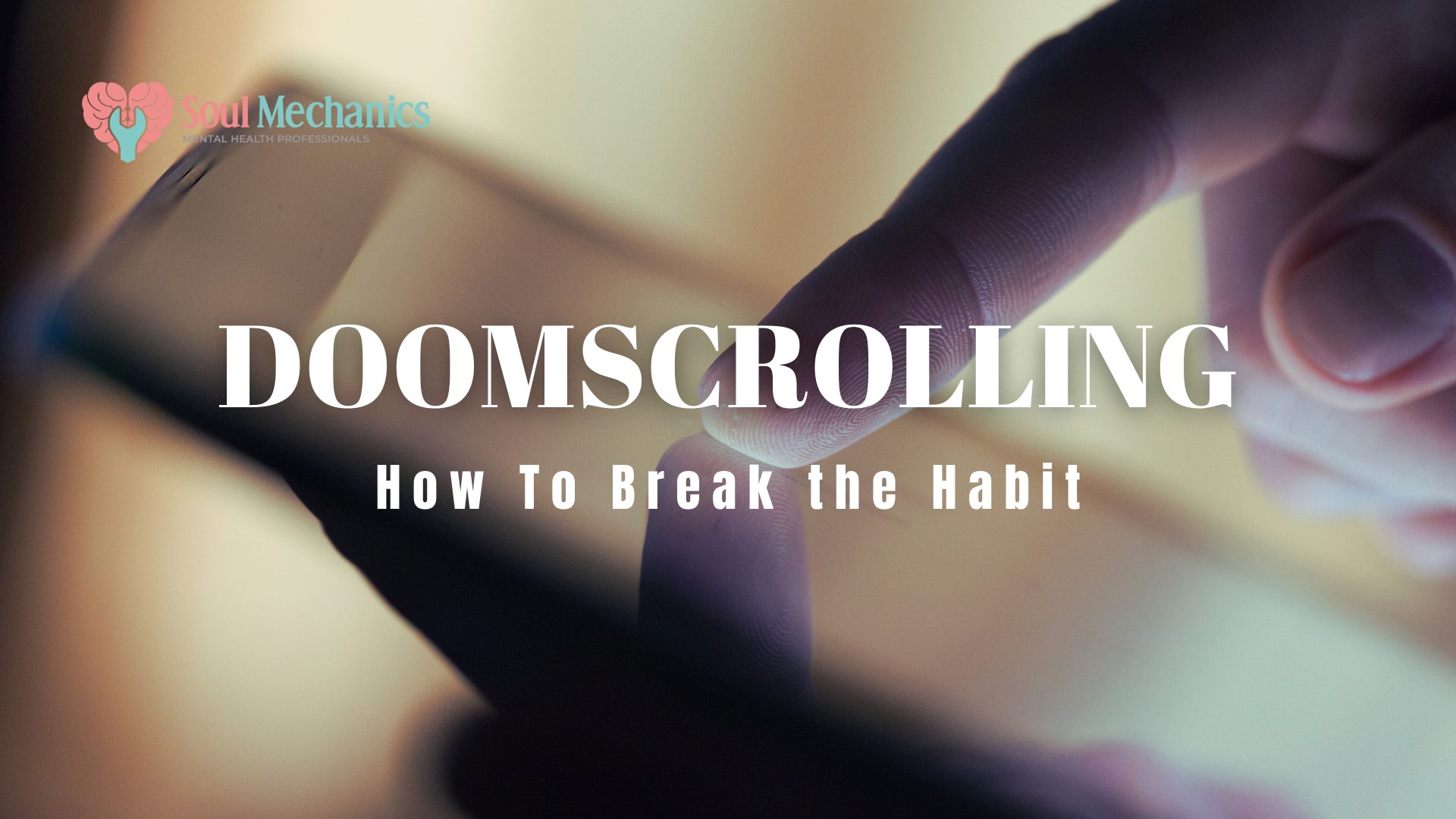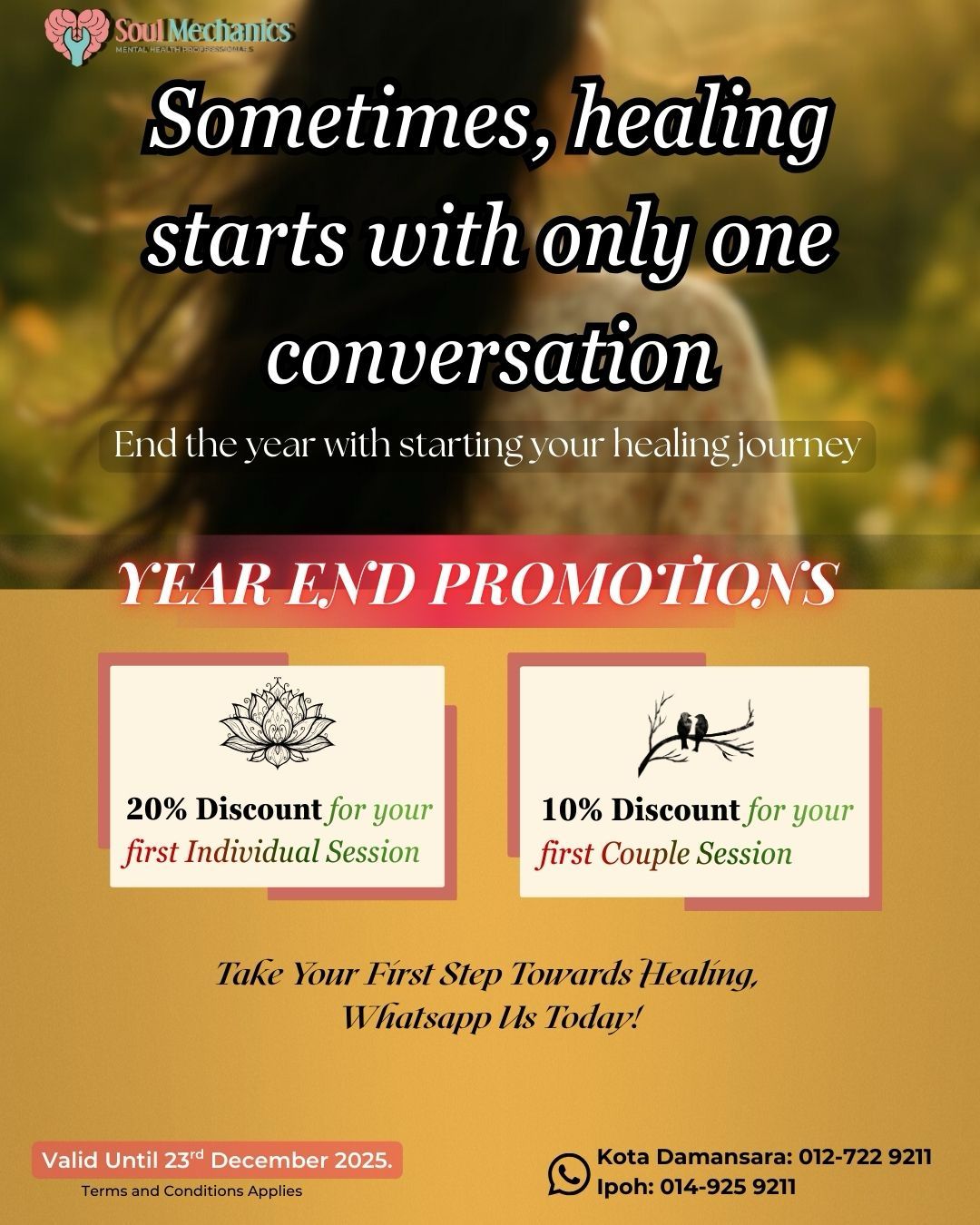Doomscrolling: What It Is and How to Break the Habit
Doomscrolling: What It Is and How to Break the Habit

Written By: Kelly Chan Jia Li, Clinical Psychologist (MAHPC(CP)00353)
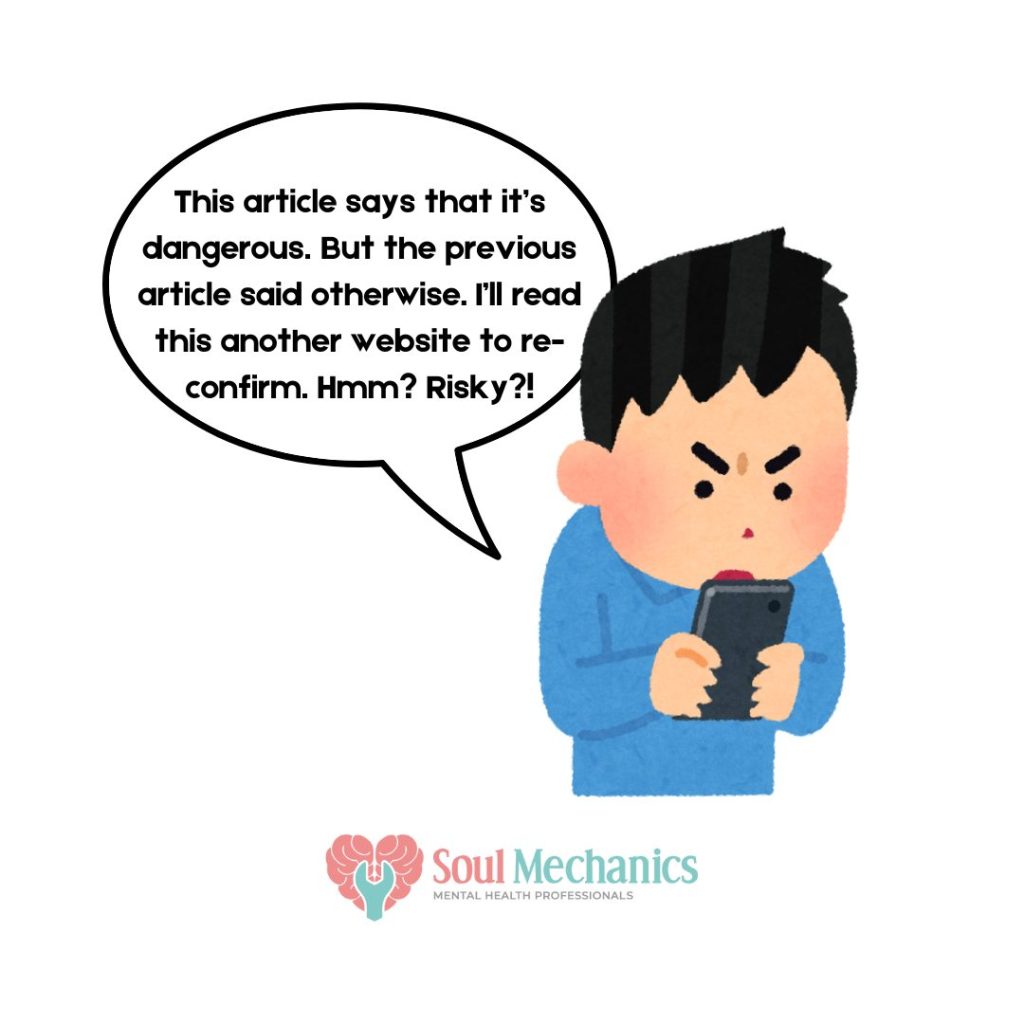
Have you ever found yourself scrolling endlessly through social media apps, only to realize you are still glued to your screen an hour later? This is called "doomscrolling". In this world of technology, doomscrolling has become an unintentional habit for many of us. While we might start with the intention of staying informed, doomscrolling can lead to a downward spiral of negativity, leaving us anxious, overwhelmed, and mentally exhausted. In this article, let’s explore what doomscrolling is, why we do it, and, most importantly, how you can take steps to break this habit.
What is Doomscrolling?
Let’s meet Jane Doe. Jane is someone who cares deeply about what is happening in the world. During the pandemic, she started checking her phone for updates on the virus first thing in the morning. What began as a quick glance at the news turned into hours of scrolling through social media, reading articles, and watching videos of the latest updates.
"Doomscrolling" is the act of continuously scrolling through negative news on social media, news websites, or apps, even though it is having a negative impact on your mental health. It became prevalent during the COVID-19 pandemic when uncertainty was high, and many individuals were glued to their phones for the latest updates.

Even though the term is relatively new, the behaviour itself is not. Humans have always been drawn to bad news as it is a survival instinct. Our brains are wired to pay more attention to negative information because it could represent a threat. In today’s world, however, where news is available 24/7, this instinct can quickly become overwhelming.
Why Do We Doomscroll?
You might wonder why we put ourselves through this. Why do we keep doing it if it makes us feel so bad? Let’s explore the whys now.
Uncertainty and Fear
When things in the world feel out of control, such as during a pandemic, political unrest, or economic crisis, we naturally want to know what is happening so we feel more prepared. We turn to the news for answers but often find more confusion and fear.
Our Brain's Negativity Bias

Our brains are wired to pay more attention to negative than positive news. It is a built-in survival mechanism from our ancestors who needed to be hyper-aware of dangers to stay alive. However, in today’s digital age, this bias makes us more likely to focus on bad news and scroll endlessly through distressing content. We might be reading an alarming headline about the economy or looking at tragic photos of a disaster, and our brain wants to "stay alert" for the next potential threat.
Instant Gratification and the Scroll Culture
Social media apps are designed to keep us scrolling. There is always something new to read, watch, or click on. With infinite feeds and algorithms tailored to your interests, these platforms reward you with a constant stream of new content. Even if the news is bad, the thrill of discovering “what’s next” hooks us in. Each new piece of information offers a momentary burst of curiosity and satisfaction, followed by another craving for the next piece of content.
The Fear of Missing Out (FOMO)
Many individuals doomscroll because they do not want to miss important updates. We feel an urge to stay updated on every piece of information, especially when it comes to global crises or major events. Whether it is a breaking news story on natural disasters, political turmoil, or a health pandemic, we do not want to be left in the dark. This fear drives us to keep checking for updates, even when it is detrimental to our mental health.
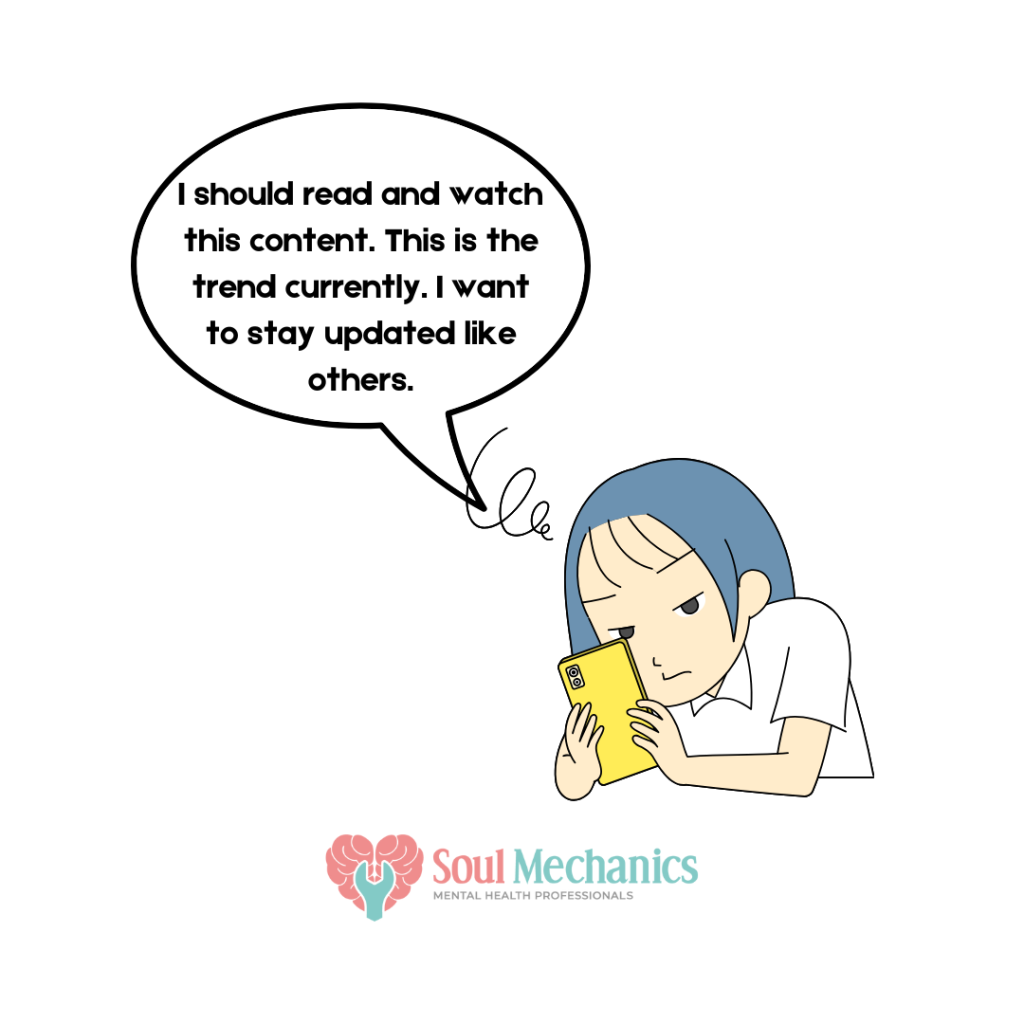
What is the Impact of Doomscrolling on Mental Health?
Anxiety and Stress
Doomscrolling creates a cycle of anxiety. We may start to feel like the world is out of control, which makes it hard to relax or feel at ease. The more negative content we consume, the more anxious we feel, making us seek more information to calm our nerves. Instead of feeling better, we end up feeling worse. Constant exposure to bad news makes us feel like the world is in continuous crisis, which can worsen symptoms of anxiety and stress over time.
Sleeping Difficulties
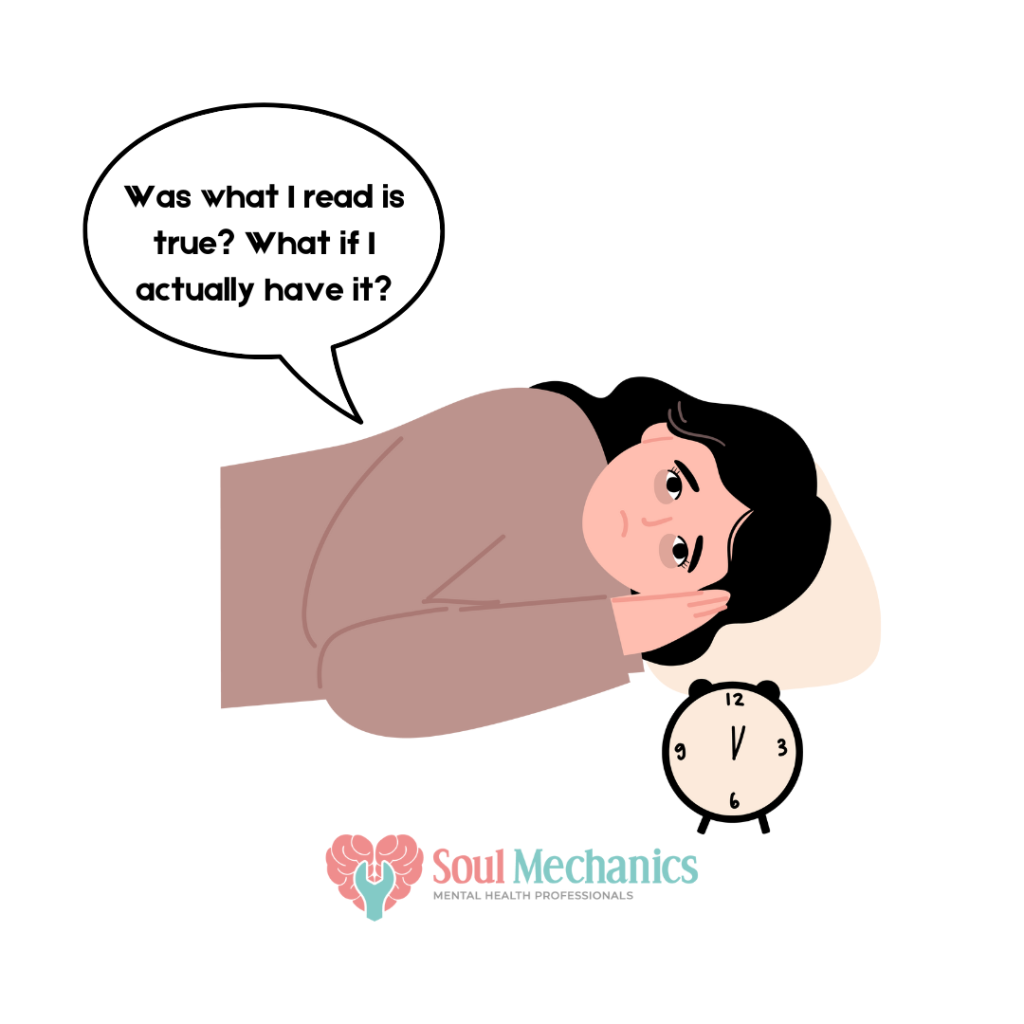
Imagine you lie down intending to sleep, but a quick check of the news turns into 45 minutes of scrolling. The headlines leave you on edge, and when you finally put your phone away, it takes much longer to fall asleep. Scrolling through distressing news right before bed can lead to poor sleep quality. The content may trigger stress and worry, making it difficult to wind down. Not to mention, the blue light from our devices affects our sleep-wake cycles, further disrupting our ability to rest.
A Skewed View of the World
When you are constantly exposed to negative stories, you may start to develop a pessimistic view of the world. Even though positive things happen daily, doomscrolling distorts your perception, making it seem like the world is only filled with problems, conflicts, and disasters. Imagine after days of reading about rising crime rates, government scandals, and economic downturns, you start feeling that everything is going wrong in the world. It makes you feel powerless, pessimistic, and distrustful of the future.
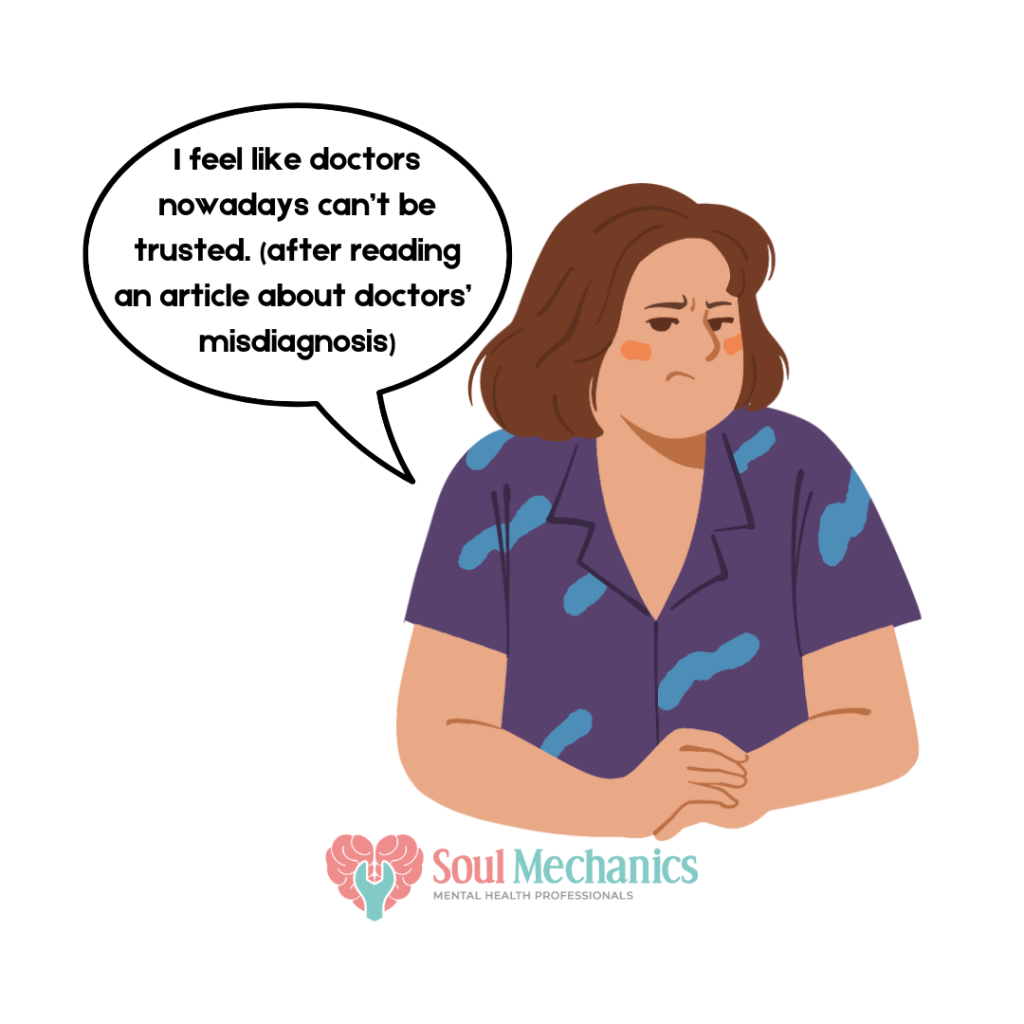
How to Break Free from Doomscrolling?
Let’s continue the story of Jane endlessly scrolling through her social media for more news. At first, Jane told herself she was just staying informed, but she noticed that her mood would get worse over time. She felt anxious, hopeless, and exhausted. She realized that her doomscrolling habit was taking a serious toll on her mental health.
If you have ever found yourself in a situation like Jane’s, you are not alone, and there are ways to break the habit. Here are some strategies to help you stop doomscrolling and regain control over your time and mental health.
Set Boundaries with Your Devices
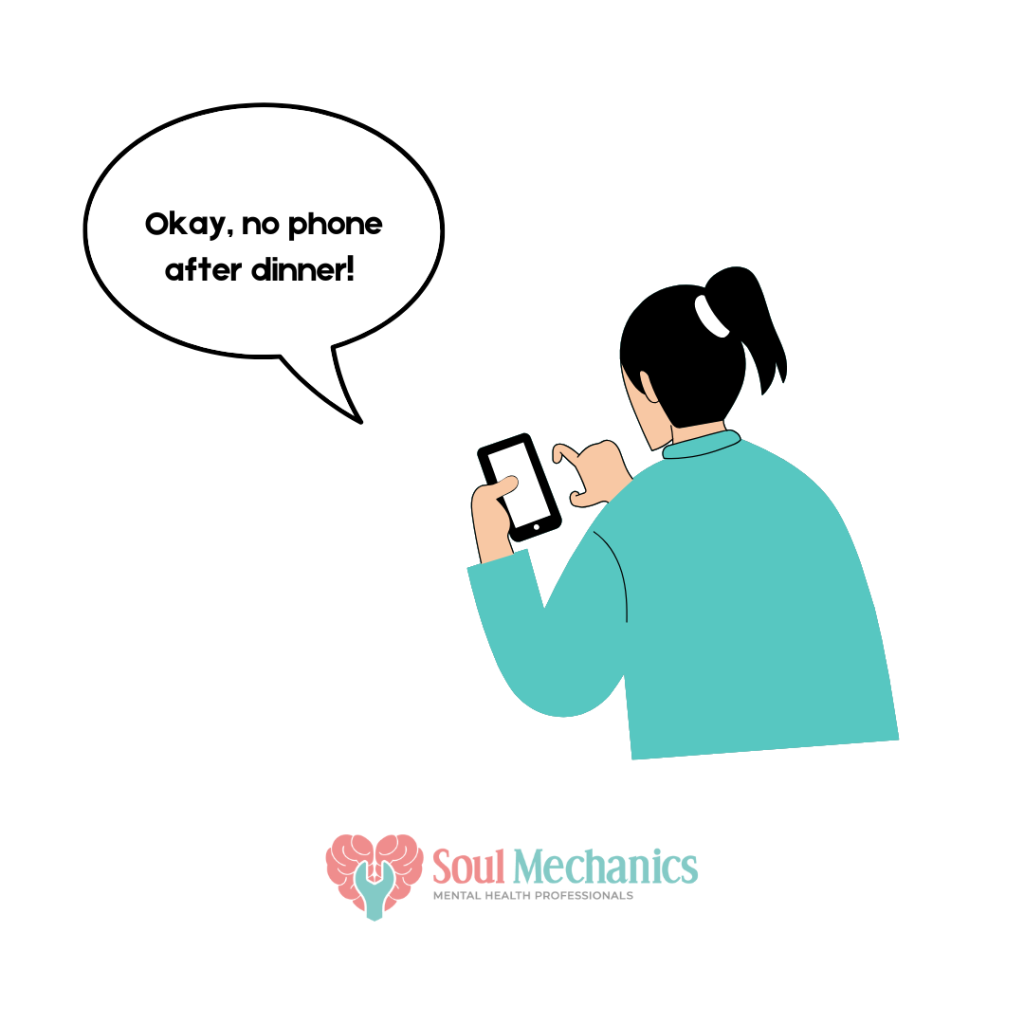
One of the simplest ways to cut back on doomscrolling is to set time limits for how long you can spend on social media or news apps. Use the built-in timers on your phone or download apps that monitor your screen time. This can help you stay informed without falling into the doomscrolling trap. For example, limit yourself to 10-15 minutes of news consumption in the morning and evening.
Be the Curator of Your Feed
Social media and news algorithms show us more of what we engage with. If you constantly click on bad news, you will get more of it. If certain news sources or individuals consistently post negative or sensational content, consider taking a break from them. Start by unfollowing or muting accounts that post sensational or negative content. Instead, follow accounts that post positive news, educational content, or topics that uplift you.
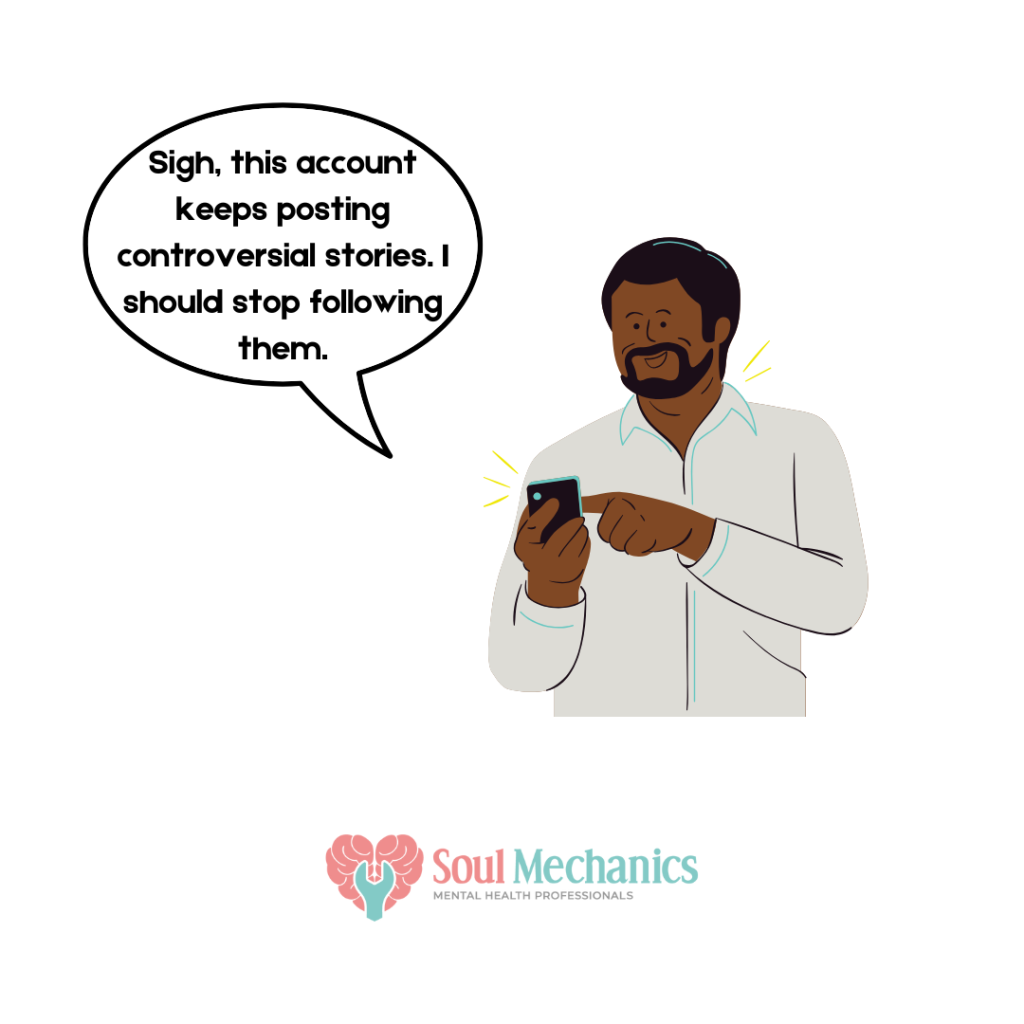
Practice Mindful Scrolling
Before you open your phone to scroll, take a moment to check in with yourself. Ask, “How am I feeling right now?” and “Why am I doing this?” If you are feeling stressed or anxious, maybe there is another activity you can do, such as going for a walk or talking to a friend, which can be more beneficial. If you catch yourself scrolling endlessly, take a deep breath and ask how it makes you feel. Pause and consider whether consuming more of this content is helpful or harmful at the moment.
Replace Scrolling with Other Activities
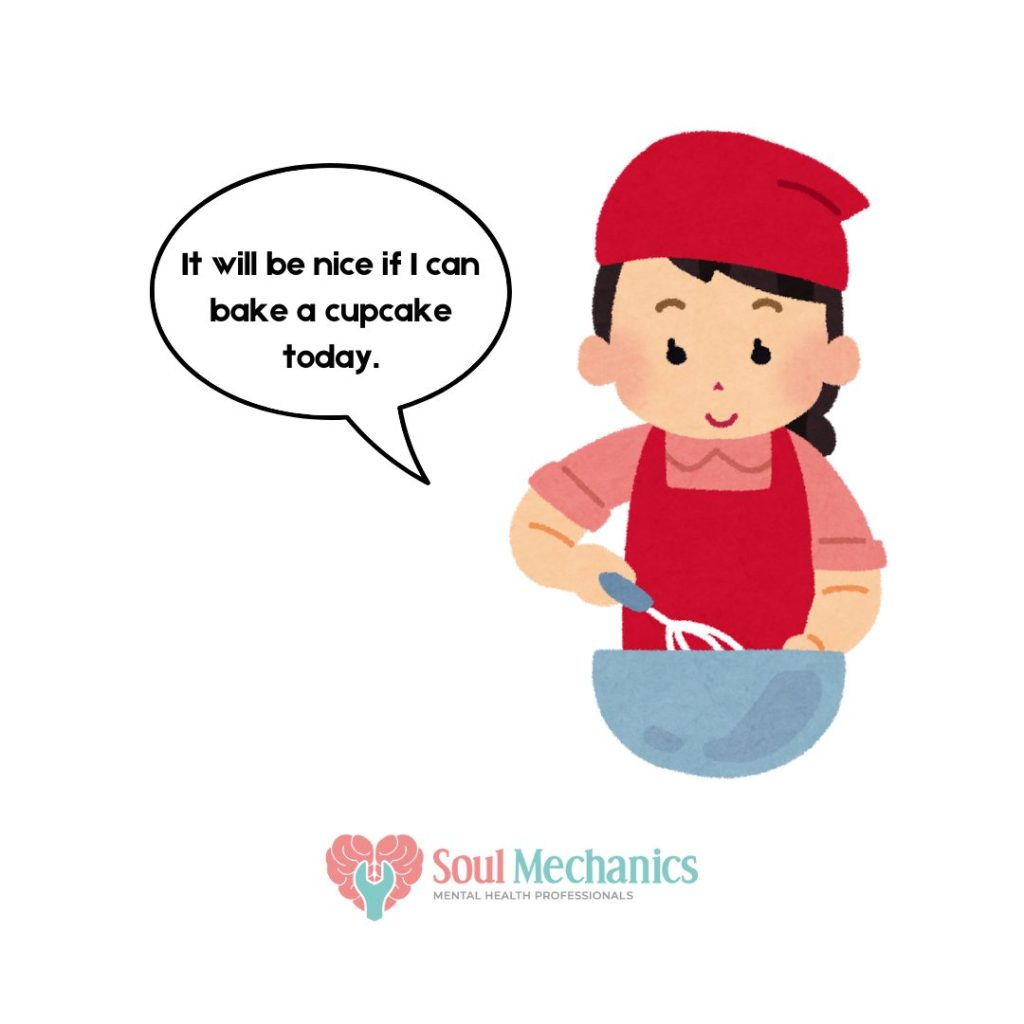
Instead of doomscrolling, find activities that bring you joy or relaxation and turn to those instead of your phone when you feel overwhelmed. This could be reading a book, calling a friend, exercising, or engaging in a hobby that brings you joy. By filling your time with activities that make you feel good, you will feel less inclined to scroll and can help break the habit of turning to negative news for comfort.
Focus on What You Can Control
Many of the problems we encounter during doomscrolling are beyond our control. Instead of fixating on global issues that may make you feel powerless, focus on areas of your life where you can make a positive difference. This could include volunteering or simply taking care of your mental and physical health. For example, you decide to make small changes in your own life, like reducing waste and conserving energy, after reading about climate change news. This gives you a sense of purpose rather than helplessness.

Talk to a Mental Health Professional
If doomscrolling is affecting your mental health, you can seek professional help from a mental health professional. Therapy can provide guidance on how to manage your anxiety, limit your news consumption, and develop healthier habits.
Reminder: If you or someone you loved are struggling with doomscrolling behaviour, please don't hesitate to reach out to us at Soul Mechanics KD or Soul Mechanics Ipoh. Remember, seeking help is not a sign of weakness but strength!
Taking Back the Control of Your Life
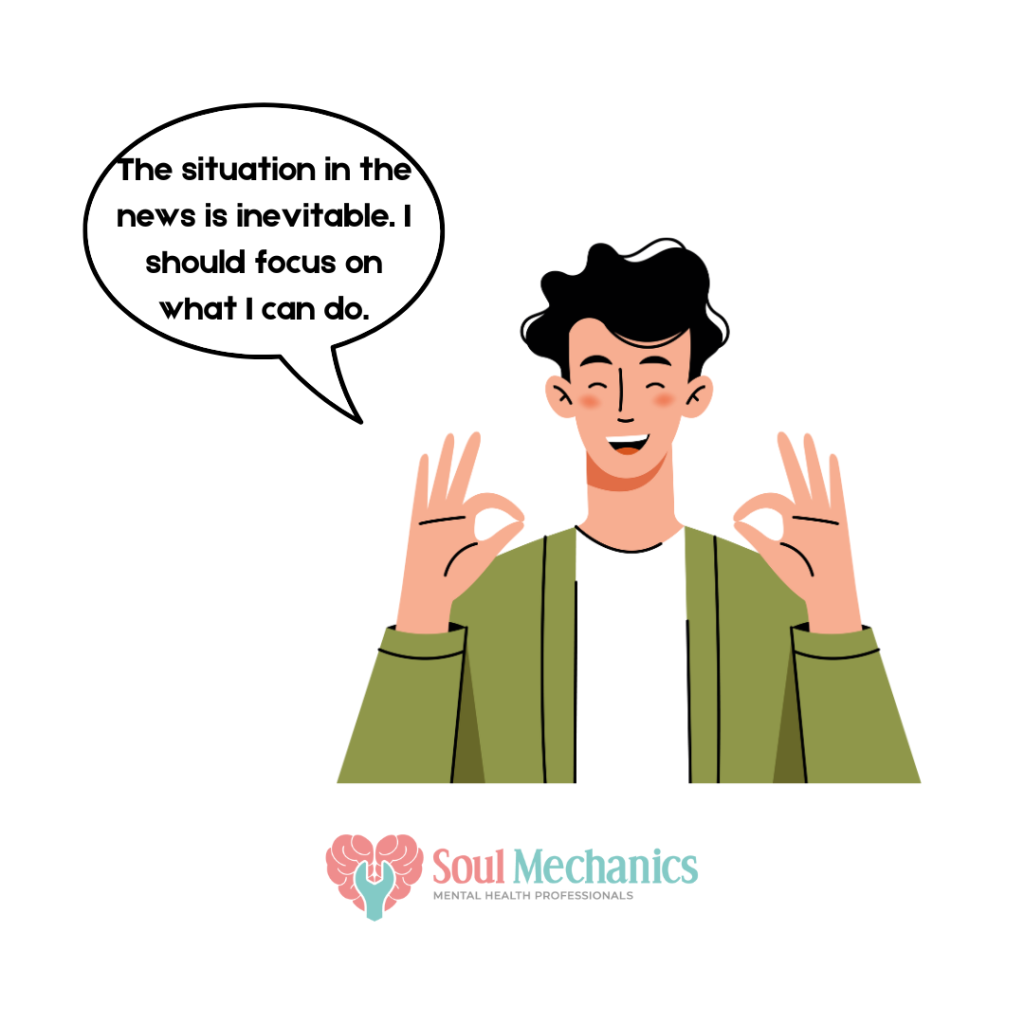
Doomscrolling can feel like an inescapable habit, but it is important to recognize that it is within your control to stop. By understanding why we doomscroll and implementing small changes, we can break free from this cycle and prioritize our well-being. Remember, staying informed is important, but so is taking care of yourself.
If you enjoyed reading this, why not broaden the horizon of knowledge by learning about "Is Porn Addiction a Coping Mechanism?"? You can read the blog here.
For more content related to mental health do follow us on our official Instagram.

